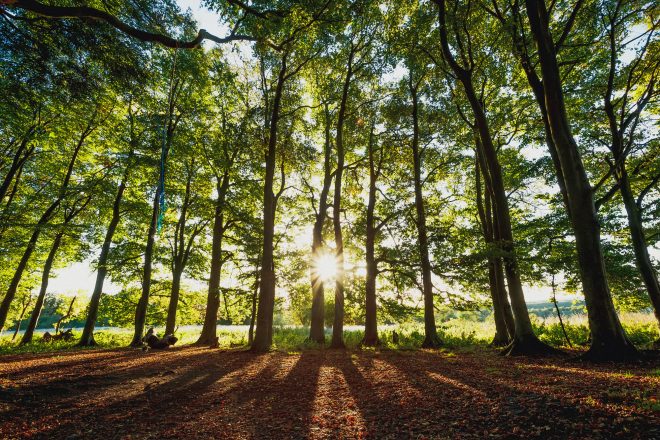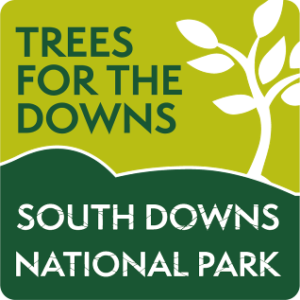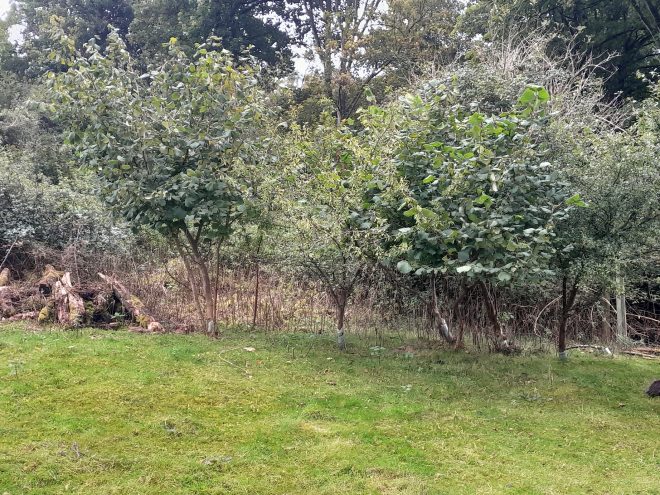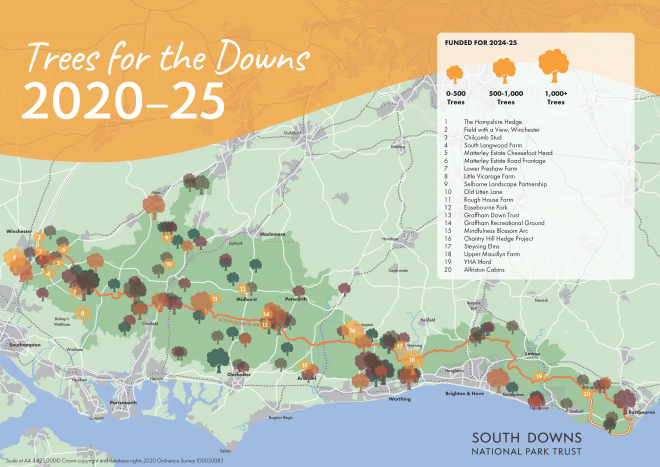Triumph for trees as South Downs National Park’s huge planting scheme edges closer to target
November 21, 2024

More than 20,000 tree plantings and a new woodland the size of five football pitches are part of a major nature recovery drive this winter by the South Downs National Park.
Among the tree planting efforts will be over 400 new disease-resistant elms, helping to return the iconic English elm to the South Downs landscape after it was decimated by disease.
As National Tree Week gets under way, scores of trees are going into the ground at 20 new sites across Sussex and Hampshire.
The 20,294 trees being planted this winter bring the Trees for The Downs initiative ever closer to smashing its target of planting 100,000 trees by the middle of this decade. The total is currently almost 75,000 and the National Park hopes to reach the target as it marks its 15th birthday next year.
Some 20 sites across the length and breadth of the National Park are benefitting from tree planting thanks to Trees for the Downs, which launched five years ago and is led by the South Downs National Park Trust, the official charity for the National Park.
 The tree planting is creating new habitat for wildlife, amenity value for local communities and increasing carbon storage to help mitigate climate change and improve soil quality. The trees are a mixture of disease-resistant elm trees and native species, such as oak and black poplar, and sites include schools, farms, recreation grounds and historic parks. There are early signs that nature is bouncing back in some places, thanks to the new trees.
The tree planting is creating new habitat for wildlife, amenity value for local communities and increasing carbon storage to help mitigate climate change and improve soil quality. The trees are a mixture of disease-resistant elm trees and native species, such as oak and black poplar, and sites include schools, farms, recreation grounds and historic parks. There are early signs that nature is bouncing back in some places, thanks to the new trees.
The planting this year has been made possible by a number of generous donations from the public and donors, including Boomtown – whose support has funded more than half of the trees with planting focused at sites in and around the festival. Support has also come from American Express, South East Water, Sykes Cottages, University of Sussex, and the London to Brighton EV Rally.
In addition to the 20,294, the Trust has supported the creation of 3.42 hectares of new woodland at Rough House Farm, Elsted, West Sussex. Up to 4,500 trees are also being planted over two years in the Hampshire Hangers, which run between Farnham and Petersfield, as part of landscape enhancements led by National Grid.
 Nick Heasman, a Countryside and Policy Manager for the National Park, said: “Trees provide clean air for us to breathe, enrich our soils, provide a vital habitat for wildlife and, crucially, are amazing carbon capturers.
Nick Heasman, a Countryside and Policy Manager for the National Park, said: “Trees provide clean air for us to breathe, enrich our soils, provide a vital habitat for wildlife and, crucially, are amazing carbon capturers.
“However, the amazing treescape that makes up almost a quarter of the South Downs National Park and is a vital resource for the entire South East is under unprecedented threat from pests and diseases, as well as climate change.
“Increasing the number and diversity of our native trees, and carefully introducing new species into the landscape, is going to be a big help in responding to all these threats and help to reverse biodiversity loss. The majestic elm is synonymous with the English countryside and I’m hopeful that our efforts will return this much-loved tree to the landscape and specific disease-resistant elms are key in supporting insect and butterfly species such as the White Letter Hairstreak
“Trees for the Downs has gone from strength to strength and I’m excited at the prospect of reaching 100,000 as the South Downs National Park marks its 15th anniversary and National Parks their 75-year anniversary.
“This tree planting is something we can all be proud of and none of it would have been possible without the support of local communities and businesses who have gone the extra mile to give back to nature, I’d like to say a massive ‘thank you’.”
The green shoots of nature recovery are emerging in some sites where trees have been planted over the past five years. A new corridor of elms on land that was previously commercially grazed near Wilmington, East Sussex, is providing refuges for wildlife as nearby ash trees succumb to disease.
Landowner Alison Cotton said: “Protecting this area has had a noticeable effect on wildlife, with large ant mounds developing in the long tussocky grass, blackthorn scrub spreading in from the boundary and oak seedlings proliferating. Badgers, small mammals and birds of prey have been seen in the area.”

Elms are thriving on land at Lancing College, where trees were planted three years ago.
Jon Hutcheon, Farm Manager, said: “The results have been positive and, despite the very changeable weather patterns, the elms are flourishing. The trees have been planted in existing woodland, newly created pockets and also along field boundaries and hedgerows. This has all helped with diversification, woodland management and habitat development.”
In order to hit the 100,000 target, the South Downs National Park Trust is inviting expressions of interest for tree planting for the winter of 2025/2026. To make an application for potential tree planting next year, visit https://southdownstrust.org.uk/trees-for-the-downs-fund/
The deadline for applications is 31 March 2025.
To donate to Trees for the Downs visit this page
- Trees for the Downs is one element of the National Park’s ReNature campaign to help biodiversity bounce back. In 2021 the South Downs National Park set a goal of transforming 13,000 hectares – or over 20,000 football pitches – into habitat for wildlife by 2030. For more information visit southdowns.gov.uk/renature/
- Research from the Woodland Trust shows one third of all woodland species in the UK are in decline and one in 10 is at risk of extinction.
- The full list of planting sites this winter are:
- Alfriston Cabins, Alfriston
- Mindfulness Blossom Arc, near Arundel
- Chantry Hill Hedge Project, near Washington
- The Hampshire Hedge Project
- Field with a View, Winchester
- Graffham Down Trust
- Easebourne Park, near Midhurst
- Lower Preshaw Farm, Upham
- South Longwood Farm, Owslebury
- Matterley Estate – road frontage A31, near Winchester
- Matterley Estate – Cheesefoot Head, near Winchester
- Upper Maudlyn Farm, nr Steyning
- Old Litten Lane, Froxfield
- Steyning Elms
- Chilcomb Stud, near Winchester
- Graffham Recreation Ground
- Itford YHA, near Southease
- Little Vicarage farm, near Bishops Waltham
- Selborne Landscape Partnership – Hampshire Hangars
- Rough House Farm, Elsted, near Midhurst

